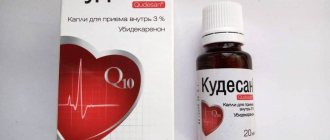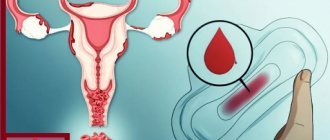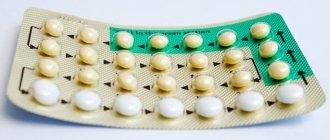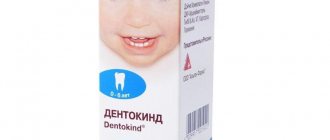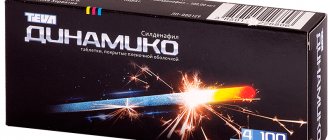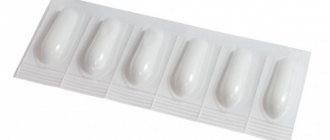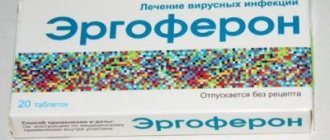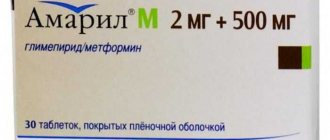Arcoxia is a selective inhibitor of cyclooxygenase type 2 (COX-2). Instructions for use explain how to properly take tablets 30 mg, 60 mg, 90 mg and 120 mg) for the treatment of arthrosis and arthritis in adults, children and pregnancy. What Arcoxia helps with, information on prices, analogues and patient reviews will also be presented in the article.
Pharmacological characteristics
Arcoxia is a medicinal product belonging to the pharmacological category of antirheumatic drugs. The medicine is related to non-steroidal anti-inflammatory drugs.
The mechanism of action of this drug consists of a process of selective inhibition of cyclooxygenase, which makes this medication effective and highly selective. The directions of pharmacological action of this medication are as follows:
- Inhibition of the production of prostaglandins, which are the main factors of inflammation.
- Providing analgesic effects.
- Anti-inflammatory effect.
- Antipyretic effect.
It is important to note that the selectivity of this drug is manifested in a significant reduction in the negative impact on the condition of the intestinal and stomach mucous membranes and on the functioning of platelets.
Patient reviews
After falling off a bicycle, severe pain appeared in the neck, spreading to the shoulders. Discomfort was observed even with slight movement. After a thorough examination, the doctor discovered osteochondrosis and prescribed me Arcoxia 90 medicinal tablets. I was very pleased with the instructions and price; the course of treatment consisted of only 5 days. I took 1 tablet per day, the pain completely disappeared on the third day. I'm satisfied with the drug.
Ilona
For the effective treatment of cervicothoracic osteochondrosis, the doctor prescribed Arcoxia. I took the pills for 7 days. Now the pain has passed, thanks to which I can freely go about my usual activities.
Varvara
All of a sudden, three of my molars started to hurt at once, which made the pain simply unbearable. No medications helped (even injections of the drug Ketorol), which is why the dentist prescribed Arcoxia 90 mg tablets. The pain subsided literally within an hour, and after taking the next pill, all the discomfort completely disappeared.
Martha
Indications for use
Why is Arcoxia prescribed? Indications for use of the drug:
- symptomatic treatment of rheumatoid arthritis, osteoarthritis, ankylosing spondylitis, accompanied by inflammatory symptoms and pain;
- short-term treatment of moderate acute pain after dental surgery;
- acute gouty arthritis.
The decision to prescribe a selective COX-2 blocker should be made taking into account all the individual risks for the patient.
Arcoxia - what are these tablets?
This drug is a selective cyclooxygenase inhibitor. Examples of such drugs are the well-known Aspirin and Ibuprofen. All of them are capable of reducing the symptoms of inflammation and pain, which is why they are used. Those who want to know what Arcoxia is should answer that these pills are used in 80 countries around the world, but they cannot be found in America, because local food and drug regulators are demanding more accurate and reliable data on their safety and effectiveness.
The main active ingredient of the drug is etoricoxib, which reduces the production of prostaglandins and thereby reduces inflammation. One tablet contains 120 mg of etoricoxib, which is responsible for suppressing pain, inflammation and fever.
The composition of the Arcoxia tablet includes additional components:
- calcium hydrogen phosphate;
- microcrystalline cellulose;
- magnesium stearate.
As already mentioned, the drug belongs to the group of anti-inflammatory and painkillers. Those interested in what Arcoxia helps with should be told that it relieves the signs of a number of diseases accompanied by a painful and unpleasant syndrome. Increased temperature in the affected area, hyperemia, swelling, impaired mobility, when it comes to joints - Arcoxia tablets cope with all these problems.
Instructions for use
The dose of Arcoxia is selected individually, as prescribed by the doctor. The medicine is taken regardless of food intake. When used on an empty stomach, the effect appears much faster. Take a tablet once a day. The course of treatment should not exceed 8 days:
- for osteoarthritis, the dose can range from 30 to 60 mg, depending on the severity of symptoms;
- for rheumatoid arthritis and ankylosing spondylitis, take 90 mg;
- to relieve pain and inflammation in acute gouty arthritis – 120 mg;
- for acute pain, 90 or 120 mg is prescribed depending on the severity of the pain syndrome;
- for chronic pain, 60 mg is prescribed.
For diseases of the heart or blood vessels, treatment courses are prescribed as short as possible to reduce the risk of complications.
When prescribing Arcoxia to elderly people, no dose adjustment is required.
Release form and composition of the drug
The high-quality drug Arcoxia is sold in the form of round tablets, which are coated with a special film coating. The medicine itself has multiple positive characteristics that help eliminate pain and speed up the patient’s recovery process. There are three dosage options for this drug on sale:
- Arcoxia 60 mg is a biconvex pill that is colored bright green. There are 7 pills on the plate; the cardboard package can contain from 1 to 4 blisters.
- Arcoxia 90 mg are apple-shaped, biconvex white tablets that are actively used in the treatment of patients. One blister contains 7 pills. The drug is packaged in cardboard packaging of 1 or 4 plates.
- Arcoxia 120 mg is a powerful biconvex tablet that is intended for the treatment of acute ailments with severe pain. The pills are colored light green and have no odor. There are 7 tablets on one plate, a maximum of 1 blister in a cardboard package.
Only the attending physician, who has carefully studied the entire medical history of his patient, can prescribe a particular dosage of a medication. Failure to comply with basic standards can cause irreparable harm to health.
One tablet contains the following elements:
- The main active ingredient is high-quality etoricoxib, which can be contained in quantities of 60, 90 or 120 mg.
- Universal film shell: processed triacetin, hypromellose, titanium dioxide, lactose monohydrate. It is worth noting that for Arcoxia 60 and 120 mg pills, a special dye is used - yellow iron oxide, as well as aluminum varnish based on indigo carmine.
- The following auxiliary components are always used: purified microcrystalline cellulose, magnesium stearate, croscarmellose sodium.
The duration of treatment depends on the pathology and current state of health. Each case is entirely individual. Experts have conducted numerous studies that have proven the effectiveness of the drug:
- Regular use of 60 mg of the drug helps cope with acute pain syndrome in patients with osteoarthritis, due to which the patient’s condition immediately improves.
- To reduce discomfort, fight inflammation and improve overall joint mobility, 90 mg of the drug is used. This dosage of the drug is especially effective for rheumatoid arthritis and ankylosing spondylitis.
- When a patient is diagnosed with an acute attack of gouty arthritis, he is necessarily prescribed an increased concentration of the active substance of the drug Arcoxia - 120 mg/day. Thanks to this, the patient’s condition significantly improves and pain in the joints is eliminated.
Arcoxia is a flat-cylindrical tablet containing 60 mg, 90 mg or 120 mg of active substance. They contain the following active and inactive components:
- etoricoxib;
- MCC;
- orthophosphoric acid
- calcium salt;
- solutab;
- magnesium stearate;
- palm wax;
- methyloxypropylcellulose;
- milk sugar;
- titanium dioxide;
- 1,2,3-triacetoxypropane;
- food additives E171 and E172.
Tablets of green (60 mg), white (90 mg) or pale green (120 mg) are packaged in blister strips of 7 pieces. The pack contains 1 or 4 blisters along with a prescription for the use of NSAIDs.
Etoricoxib is a selective inhibitor of inducible cyclooxygenase (COX-2). In therapeutic dosage, it inhibits the production of prostaglandins and arachidonic acid. Inhibition of enzymes involved in the biosynthesis of inflammatory mediators is accompanied by a decrease in the severity of inflammatory reactions in tissues.
According to clinical tests, Arcoxia does not affect the function of the gastrointestinal mucosa and blood platelets (platelets). At the same time, etoricoxib does not affect the biosynthesis of constructive cyclooxygenase, which stimulates the transformation of arachidonic acid into prostacyclins. Studies have not established the effect of NSAIDs on the rate of platelet aggregation provoked by collagen.
The use of Arcoxia does not eliminate the need to use other groups of medications, including antibiotics. But it's worth remembering the following:
- before combining Arcoxia and other drugs, you should consult your doctor;
- Arcoxia enhances the effectiveness of anticoagulants and antiplatelet agents, lowering prothrombin time;
- reduces the effect of diuretics and antihypertensive drugs;
- if acetylsalicylic acid is used, then as a prevention of cardiovascular complications. But you should not get carried away, as gastric bleeding may be provoked;
- the compatibility of cyclosporines with Arcoxia enhances its nephrotoxic effect.
Arcoxia and Kagocel
Kagocel is an antiviral drug. Judging by the instructions for both Arcoxia and Kagocel, taking these drugs together is possible. Arcoxia can coexist with drugs of this pharmacological group, and Kagocel combines well with other antiviral drugs, immunomodulators, antibiotics and other drugs.
Arcoxia and alcohol
Due to the fact that the instructions do not directly prohibit combination with alcohol, the question of their compatibility naturally arises. The simultaneous use of non-steroidal anti-inflammatory drugs in combination with alcohol is undesirable due to the possible occurrence and intensification of side effects. Migraine, weakness, nausea and vomiting, allergic reactions, diarrhea, spatial disorientation, renal failure, increased load on the liver, etc.
Not the most pleasant set, right? Arcoxia in combination with alcohol leads to deterioration of the gastrointestinal tract and poisoning and internal bleeding. The risk of myocardial infarction, increased blood pressure, and cardiovascular failure cannot be excluded. But there are still a couple of tips. You can start drinking alcohol only after the drug has been completely eliminated from the body, which means 24 hours after taking the last pill. This also works the other way around: you should not drink alcohol the day before taking Arcoxia.
Contraindications to the use of Arcoxiaa
Before using this drug, you should be examined by a doctor and find out whether there are contraindications for the use of Arcoxia. According to scientific research, there are a number of contraindications:
- tendency to gastrointestinal bleeding;
- cerebrovascular bleeding;
- individual intolerance to the components of the drug;
- bronchial asthma;
- polyposis of the nose or sinuses in the acute stage and frequent relapses;
- intolerance to NSAIDs;
- ulcers, erosions and perforations of the gastrointestinal tract;
- intestinal inflammation;
- kidney disease in progress;
- hyperkalemia;
- blood diseases caused by bleeding disorders (hemophilia);
- severe liver failure;
- liver diseases;
- chronic renal failure;
- pregnancy and breastfeeding;
- children under 16 years of age;
- period after surgery associated with coronary artery bypass grafting;
- peripheral arterial disease;
- blood pressure over 140/90 Hg;
- cerebrovascular diseases;
- lactase intolerance, lactase deficiency.
Side effects
- epigastric pain;
- nausea, vomiting;
- diarrhea;
- dyspepsia;
- flatulence;
- bloating;
- belching;
- increased peristalsis;
- constipation;
- dryness of the oral mucosa;
- gastritis;
- ulcer of the mucous membrane of the stomach or duodenum;
- irritable bowel syndrome;
- esophagitis;
- ulcers of the oral mucosa;
- gastrointestinal ulcers (with bleeding or perforation);
- headache;
- dizziness;
- weakness;
- taste disturbance;
- drowsiness;
- sleep disorders;
- sensitivity disorders, incl. paresthesia/hyperesthesia;
- anxiety;
- depression;
- hallucinations;
- confusion;
- blurred vision;
- conjunctivitis;
- noise in ears;
- renal failure, usually reversible when the drug is discontinued;
- anaphylactic/anaphylactoid reactions, including a marked decrease in blood pressure and shock;
- heartbeat;
- increased blood pressure;
- tides;
- cerebrovascular accident;
- atrial fibrillation;
- congestive heart failure;
- hypertensive crisis;
- cough;
- dyspnea;
- nose bleed;
- bronchospasm;
- swelling of the face;
- skin itching;
- rash;
- hives;
- Stevens-Johnson syndrome;
- Lyell's syndrome;
- infections of the upper respiratory tract, urinary tract;
- muscle cramps;
- arthralgia;
- myalgia;
- swelling, fluid retention;
- changes in appetite;
- weight gain;
- leukopenia, thrombocytopenia;
- flu-like syndrome;
- chest pain.
Read also: How to take Paracetamol: 6 rules
Cases of overdose
If the maximum permitted dose of the drug is exceeded, disorders of the digestive tract (abdominal pain, belching, heartburn, nausea, vomiting, stool retention, flatulence) and the cardiovascular system (rhythm disturbances, increased blood pressure, palpitations, etc.) may occur. .
First of all, people with impaired kidney and liver function, as well as those with concomitant diseases of the above organ systems, are susceptible to such manifestations. Clinical studies have not determined the “critical” dose that causes an overdose of the drug.
Analogs
Drugs for the treatment of arthrosis include analogues:
- Actasulide;
- Alflutop;
- Apranax;
- Artra;
- Artradol;
- Arthrovitis;
- Arthrotek;
- Aulin;
- Brufen;
- Butadion;
- Veral;
- Voltaren Emulgel;
- Glucosamine sulfate 750;
- Dexazone;
- Dexamethasone phosphate;
- Diclobene;
- Dicloberl;
- Dicloran;
- Diclofen;
- Diclofenac;
- Dimexide;
- Diprospan;
- Dolgit;
- DONA;
- Donalgin;
- Zinaxin;
- Ibuprofen;
- Indomethacin;
- Kartilag Vitrum;
- Ketonal;
- Coxib;
- Mesulide;
- Miolastan;
- Movasin;
- Naproxen;
- Nimesil;
- Ortofena;
- Piroxicam;
- Revma gel;
- Ronidaza;
- Rumalon;
- Sabelnik Evalar;
- Sanaprox;
- Tenikam;
- Tenoctil;
- Triamsinolone;
- Fastum gel;
- Feloran;
- Flolide;
- Chondramin;
- Chondrolone;
- Cefekon;
- Cigapan;
- Junium.
special instructions
It is necessary to prescribe with caution to patients taking other non-steroidal anti-inflammatory drugs, especially acetylsalicylic acid.
- When prescribing the drug, perforation, ulceration or bleeding from the upper digestive tract, even death, is possible.
- Renal function should be closely monitored in persons at risk of impaired renal function, as etoricoxib may reduce renal blood flow.
- In the presence of pathology of the heart or blood vessels, the drug should be prescribed in short courses and in the lowest effective dosage, since the use of etoricoxib may develop thrombotic complications.
- In case of possible liver pathologies, it is necessary to monitor the level of transaminases in the blood.
- Particular attention should be paid to elderly people, if there is a dysfunction of any of the body systems, or if the patient has dehydration.
- Prescribe with caution when taking warfarin and other oral anticoagulants.
- Etoricoxib is not recommended for use when planning pregnancy.
- Serious skin lesions occurred in isolated cases. Anaphylactic reactions and the development of Quincke's edema are possible, which is why you should pay attention to the presence of allergic reactions in the patient's history to any medications. When the first skin manifestations appear, the medicine should be discontinued.
- Arcoxia contains lactose, as a result of which the drug is contraindicated for persons suffering from lactose intolerance.
When taking the drug, fluid retention in the body, development of edema and arterial hypertension is possible. Therefore, when prescribing the drug for patients with a tendency to such phenomena, it is necessary to take precautions, pay special attention to blood pressure control, and if the condition worsens, take appropriate measures, including discontinuing the drug and prescribing an alternative treatment.
Pharmacokinetic properties
The therapeutically active components of the anesthetic drug are quickly absorbed into the bloodstream through the walls of the gastrointestinal tract. The bioavailability of etoricoxib when taken orally is 99-100%. The maximum rate of achievement of peak concentrations of metabolites in plasma is 60 minutes when taking at least 120 mg.
Eating food has virtually no effect on the intensity of absorption of NSAID components. Parallel use of antacids does not affect the pharmacokinetic properties of the drug.
Upon penetration into the blood, etoricoxib binds to albumin by at least 92-95%. In the case of taking 120 mg of the drug, the volume of redistribution of active substances in an equilibrium state is 125 liters. It is known that active metabolites of NSAIDs penetrate the hematoplacental and blood-brain barrier.
Under the influence of cytochrome P450 isoenzymes, etoricoxib is metabolized in the parenchyma to 6-hydroxymethyl-etoricoxib. No more than 1% of active substances are excreted unchanged by the kidneys. Etoricoxib is broken down into 5 different metabolites, most of which do not affect COX-1 and have little activity against inducible cyclooxygenase.
Drug interactions
Despite the insignificant effect of Arcoxia on platelet function, the drug enhances the effectiveness of anticoagulants and antiplatelet agents.
Important! If a combination of Arcoxia and these groups of drugs is necessary, prothrombin time indicators should be regularly monitored.
Arcoxia leads to a decrease in the effectiveness of the following groups of drugs:
- ACE inhibitors.
- Diuretics.
- Angiotensin 2 receptor inhibitors.
Arcoxia increases the activity of the following drugs:
- NSAIDs, including Acetylsalicylic acid;
- Tacrolimus;
- Cyclosporine;
- medicines based on lithium salts;
- oral contraceptives;
- estrogen hormones used during menopause.
The antibiotic Rifampicin reduces the effectiveness of Arcoxia.
Combination therapy
The simultaneous use of Arcoxia with Warfarin or similar drugs may have negative consequences. Particular difficulties may arise both at the initial stage of therapy and whenever adjustments are made to the dosage regimen.
If combination therapy has been chosen for the patient, which involves the use of the drug Arcoxia and ACE inhibitors, then it is important to consider that such a combination may have a weakening effect of the hypotensive effects of inhibitors on the body. If the patient suffers from impaired kidney function, then this method of combating the disease is fraught with further aggravation of the clinical picture.
If Arcoxia is used by a patient together with Tacrolimus and Cyclosporine, then the risk of developing complex nephrotoxicity of these medications increases significantly. In addition, doctors consider it unacceptable when etoricoxib is combined with the following drugs:
- Using Methotrexate together with the drug Arcoxia may lead to an increase in existing adverse reactions.
- The use of even the smallest doses of acetylsalicylic acid increases the risk of developing ulcerative lesions of the gastrointestinal tract.
- Regular use of Rifampicin and Arcoxia reduces the plasma AUC of etoricoxib by 67−70%.
- The described drug may slightly weaken the hypotensive effect of universal FGA inhibitors.
- The planned use of oral contraceptives and the drug Arcoxia 120 mg increases the development of thromboembolic complications.
- When a patient takes an increased dose of the drug along with Warfarin, the INR increases by 13%. Pharmacists note that this indicator must be monitored with each dosage change, as well as at the initial stage of therapy. If the patient has been diagnosed with serious renal dysfunction, then simultaneous use of Arcoxia with innovative APT inhibitors can only aggravate the existing clinical picture.

